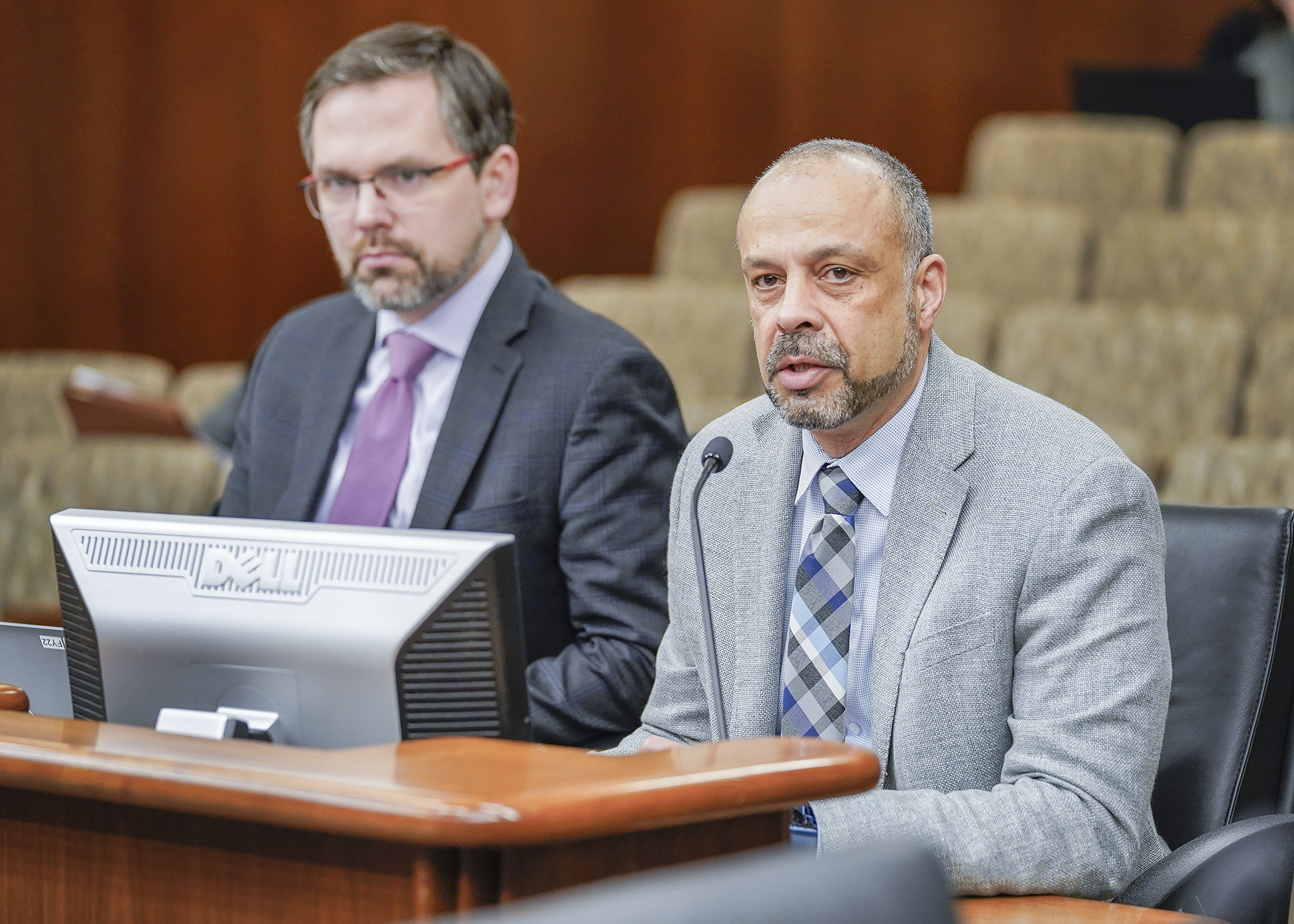‘Moving Technology Forward for Minnesotans’ theme of requested MNIT budget increase

In a world where technology is seemingly everywhere, consequences of a security breach or shut down can be devastating to one’s day-to-day operations.
Most of us run security updates in hopes of maintaining a well-running device and keeping the bad guys at bay.
The state is no different.
Minnesota IT Services ensures state operations continue to work as they should — things like getting a driver’s or fishing license, securing a park permit or collecting unemployment. It provides enterprise and local IT services to more than 70 agencies, boards, and commissions.
“Bringing those digital experiences to Minnesotans requires an investment that is really, really crucial, and brings about an efficiency in government that is essential,” Commissioner Tarek Tomes told the House State and Local Government Finance and Policy Committee at an informational hearing Thursday.
But, like most things, costs have gone up and so has the recommended total of state money used for this purpose in the Gov. Tim Walz’s budget request. This year’s requested budgetary increase for the 2024-25 biennium is $111.2 million.
“It certainly is a significant increase, but I think it comes from historic underspending,” Tomes said.
Officials noted, however, the agency number could be a bit misleading.
“What you see is an increase in direct funding that goes to MNIT for a more enterprise strategic approach to investing in application modernization," said Deputy Commissioner Jon Eichten. “In the past, those dollars have gone directly to agencies based on the applications they request. What the governor is proposing is that the IT organization prioritize what is most important and what those biggest opportunities are.”
[MORE: View the Minnesota IT Services presentation]
Tomes said a “significant number” of applications in the state’s portfolio are more than a decade old.
“The ability to patch and secure right now requires building bigger walls and bigger moats, which is inefficient and ineffective,” he said. “Our ability to modernize those applications so that we can make sure the layers of defenses we put in place are crucial. … These are not MNIT items, they’re executive branch items and oftentimes they’re actually statewide items.”
How would some of the new 2024-25 biennial funding be used?
- $40 million to address aging technology and modernize targeted applications;
- $33.6 million to move state agencies to the cloud platform;
- $32.9 million to advance cybersecurity statewide;
- $1.4 million to maintain current levels of service; and
- $600,000 to support accessible technology in state government.
“Citizens want us to meet them where they are when it comes to services. … The consequences of not acting to modernize; the consequences of not adequately funding our IT funds are incredibly stark,” said Rep. Kristin Bahner (DFL-Maple Grove).
Related Articles
Search Session Daily
Advanced Search OptionsPriority Dailies
Speaker Emerita Melissa Hortman, husband killed in attack
By HPIS Staff House Speaker Emerita Melissa Hortman (DFL-Brooklyn Park) and her husband, Mark, were fatally shot in their home early Saturday morning.
Gov. Tim Walz announced the news dur...
House Speaker Emerita Melissa Hortman (DFL-Brooklyn Park) and her husband, Mark, were fatally shot in their home early Saturday morning.
Gov. Tim Walz announced the news dur...
Lawmakers deliver budget bills to governor's desk in one-day special session
By Mike Cook About that talk of needing all 21 hours left in a legislative day to complete a special session?
House members were more than up to the challenge Monday. Beginning at 10 a.m...
About that talk of needing all 21 hours left in a legislative day to complete a special session?
House members were more than up to the challenge Monday. Beginning at 10 a.m...